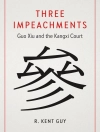Since antiquity, the vast Central Eurasian region of Xinjiang, or Eastern Turkestan, has stood at the crossroads of China, India, the Middle East, and Europe, playing a pivotal role in the social, cultural, and political histories of Asia and the world. Today, it comprises one-sixth of the territory of the People’s Republic of China and borders India, Pakistan, Afghanistan, Tajikistan, Kyrgyzstan, Kazakhstan, Russia, and Mongolia.
Eurasian Crossroads is an engaging and comprehensive account of Xinjiang’s history and people from earliest times to the present day. Drawing on primary sources in several Asian and European languages, James A. Millward surveys Xinjiang’s rich environmental and cultural heritage as well as its historical and contemporary geopolitical significance. Xinjiang was once the hub of the Silk Road and the conduit through which Buddhism, Christianity, and Islam entered China. It was also a fulcrum where Sinic, steppe nomadic, Tibetan, and Islamic imperial realms engaged and struggled. In the twentieth and twenty-first centuries, the Han-dominated Chinese Communist Party has failed to include Xinjiang’s diverse indigenous Central Asian peoples. Its nationalistic visions have spurred domestic troubles that now affect the PRC’s foreign affairs and global ambitions.
This revised and updated edition features new empirically grounded and balanced analysis of the latest developments in the region, focusing on the circumstances of the Uyghurs, Kazakhs, and other Xinjiang peoples in the face of policies implemented by the Chinese Communist Party.
สารบัญ
List of Illustrations
List of Maps and Figures
Preface and Acknowledgements
Preface to the Revised and Updated Edition
Maps
1. Ancient Encounters (earliest times–8th century)
2. Central Eurasia Ascendant (9th–16th centuries)
3. Between Islam and China (16th–19th centuries)
4. Between Empire and Nation (late 19th–early 20th century)
5. Between China and the Soviet Union (1910s–1940s)
6. In the People’s Republic of China (1950s–1980s)
7. Between China and the World (1990s–2000s)
8. Colonialism, Assimilationism and Ethnocide (2000s–2020s)
Appendix: Xinjiang Historical Timeline
General Bibliography
Index
เกี่ยวกับผู้แต่ง
James A. Millward is professor of intersocietal history at the Walsh School of Foreign Service at Georgetown University. His books include
The Silk Road: A Very Short Introduction (2013) and
Beyond the Pass: Economy, Ethnicity and Empire in Qing Xinjiang, 1759–1864 (1998).












